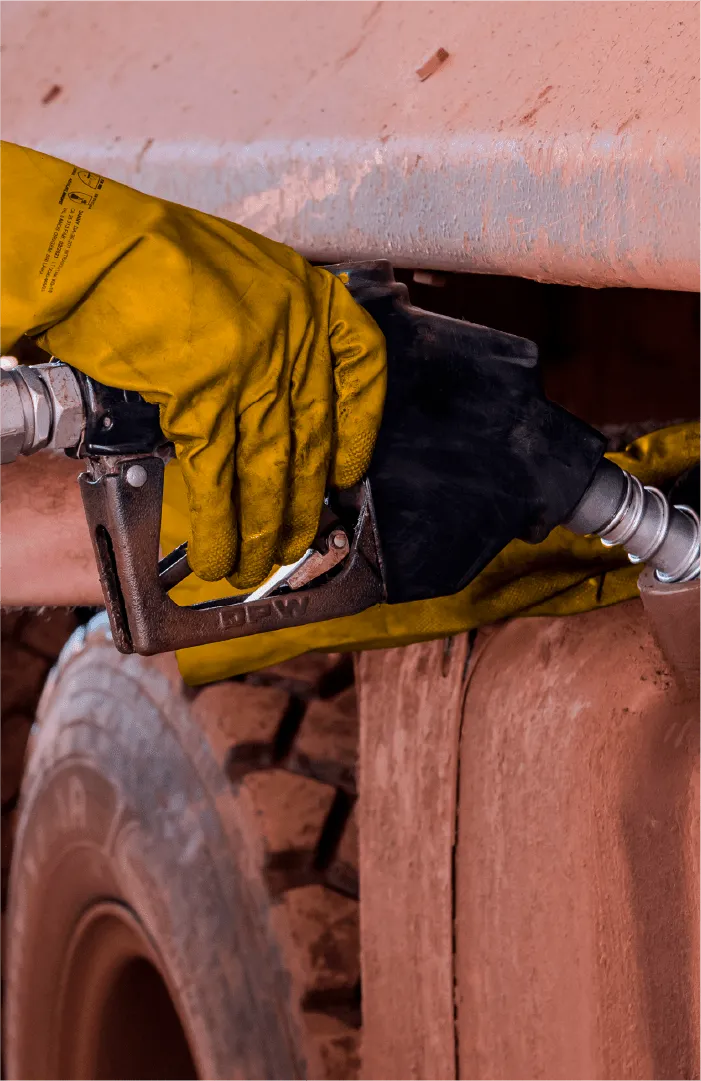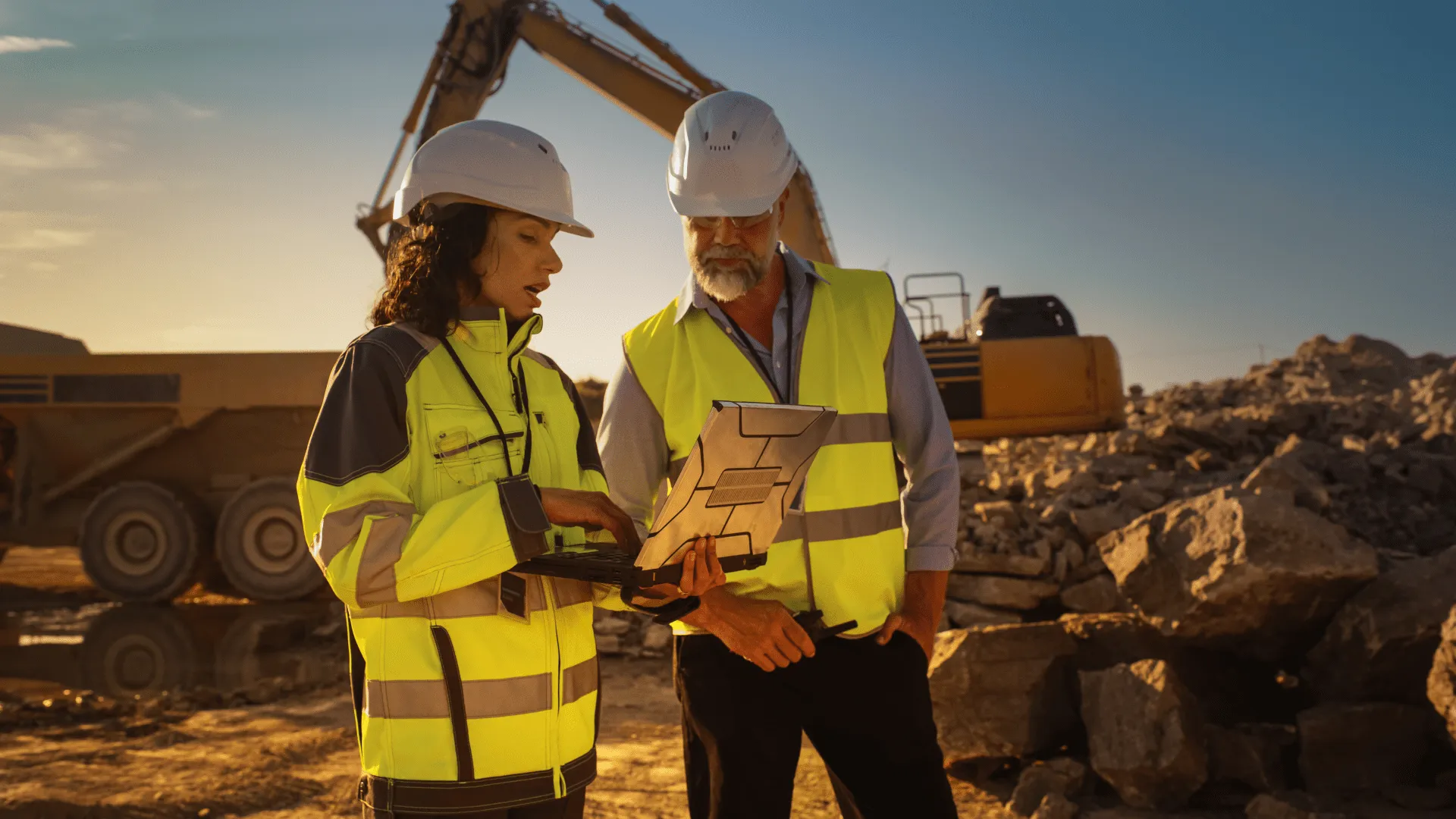In a mine, the loading and transportation processes are similar to the performance of an orchestra. Due to the large number of pieces of equipment used in these stages of mineral production, it is necessary to have a conductor capable of monitoring and directing this fleet for the most harmonious and productive use. Therefore, when operating a mine, regardless of its size, effective management of this fleet of equipment is essential. But what is the basis of effective fleet management?
According to Peter Drucker, the father of modern management, for effective fleet management in mining enterprises, it is essential to invest without rationing, especially financially. This allows you to rely on equipment management systems such as Mining Control, from Fast2Mine, which increase productivity, efficiency and reduce operating costs in your mine.


COORDINATION IN MINING:
In the mining industry, effective coordination between equipment is paramount for efficient production. In open-pit mines, excavators and wheel loaders work in tandem to extract overburden, transporting it to designated disposal piles. These machines also load trucks that haul the ore from the working face or stockpiles to the beneficiation process.
Synchronized operations are essential to prevent queuing, idle time, material losses, and extra expenses such as rehandling or excessive haulage. Considering that transportation accounts for around 60% of mining costs, effective management is crucial to reduce these costs and ensure competitiveness in the market. Given the significant share of transportation in overall costs, each truck trip must be carefully planned.


THE CHALLENGES OF THE MANUAL DISPATCH SYSTEM:
Currently, many mining companies still choose to manage their fleet through a manual dispatch system, a traditional tool with an apparent low investment cost. However, due to the inefficiency of this process, the expected savings translate into a number of losses that are often not even noticed by managers.
In this type of system, decision-making is done by the supervisor, instructions are transmitted via radio to the operators and the information is precariously recorded in documents called daily parts. This makes the operation more susceptible to ineffective communication, human error, failure to identify access conditions in good time and difficulties in tracking the fleet. Scenarios that can trigger missed or poorly managed journeys.
Another aspect of poor transportation management within mines is that trucks can operate in an “underload” regime, resulting in major productivity losses, or overload, causing problems with equipment breakdowns or a reduction in its useful life. These operational circumstances can lead to losses in mine handling and increased maintenance costs. Let’s take a look at how this can happen in practice.


SIMULATION OF ANNUAL LOSSES FROM LOST TRIPS:
Let’s look at a simulation of the annual loss from lost trips, considering an iron ore mine with 10 pieces of equipment, with the price of ore at US$110.00 and the dollar rate at BRL5.00. Follow along!
- Number of trucks: 10
- Let’s assume that each of these trucks makes one missed trip per day
- Days of operation per month: 30
- Average truck weight: 30t
- Working regime: 24 hours a day
- 50% ROM split and 85% mass recovery (*)


THEREFORE, THE MONTHLY LOSS OF MISSED TRIPS IS GIVEN BY:
(A) Mass moved lost in the month = Days of Operation x Average Weight x Trips lost
(A) = 30 days x 30 t x 10 trips = 9,000t
(B) Product mass lost in the month = (A) x ROM split x Mass recovery
(B) = 9,000t x 50% x 85% = 3,825t
(C) Revenue lost in the month = (B) x Ore price x Dollar rate
(C) = 3,825t x 110.00 USD x 5.00 BRL = BRL 2,103,750.00


THEREFORE, THE ANNUAL LOSS OF LOST TRIPS IS:
(D) Revenue lost in the year = (C) x 12 months = BRL 25,245,000.00
It is then concluded that from the data in this simulation, the mining company would be losing BRL25.0 million per year due to the missed trips. As the calculations above are a simplified estimate, the mining company’s real loss could be higher when indirect costs and production losses are taken into account. Quite a loss, wouldn’t you say?


INVESTING IN AUTOMATED SYSTEMS:
In view of the financial losses presented above, it is essential that mining companies invest in automated dispatch systems that offer constant data collection and rapid response to changes in the mine’s operational scenario.
Faced with the urgent need for dispatch systems that help to effectively manage a mine’s fleet and make it possible to achieve the operation’s objectives, Fast2Mine has the Mining Control solution: a system that carries out dynamic allocations, generating more agility and reliability for your operation. In addition, our solution identifies operational anomalies and the condition of the plazas and tracks, guaranteeing more efficient and profitable execution. It’s no wonder that Mining Control is a national benchmark in the segment and a leader in the Brazilian mining industry. Want to know more about the product? Request a presentation here!
Until the next blogpost.

(*) ROM split is the percentage of the material handled that enters the processing process. Mass recovery is the percentage of material that enters the mill/processing plant and becomes a product.



